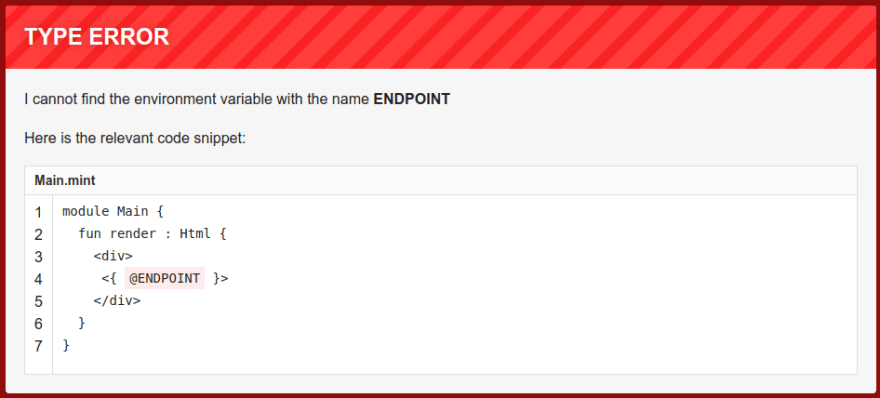Environment Variables Sunday, June 2nd, 2019
In any application, being able to define variables which are deployment environment specific is a necessity. Let's say you might want to connect to a local API endpoint during development and remote API on production.
Defining environment variables
Mint uses
.env
files to store variables specific to the environment, which usually looks like
this:
ENDPOINT=http://localhost:3001
WSENDPOINT=ws://localhost:3001
GATRACKINGID=google-analytics-tracking-id
Here we declared three variables
WSENDPOINT
,
ENDPOINT
and
GATRACKINGID
that we want to use in our code.
Using environment variables
In Mint you can use the at (
@
symbol followed by the name of the variable to refer to it:
module Main {
fun render : Html {
<div>
<{ @ENDPOINT }>
</div>
}
}
Essentially the value of the variable will be inlined during compilation with the type of
String.
In an other example you can see how to use it when making a request:
...
response =
@ENDPOINT + "/api/planets"
|> Http.get()
|> Http.send()
...If an environment variable is not defined in the application, then a nice error message is shown:

Using a different
.env
file
By default the
.env
file in the root of the application is loaded, but you can specify a
different file by using the
--env
(or
-e
) flag like this:
mint build --env .env.productionThat's it for today, thank you for reading 🙏